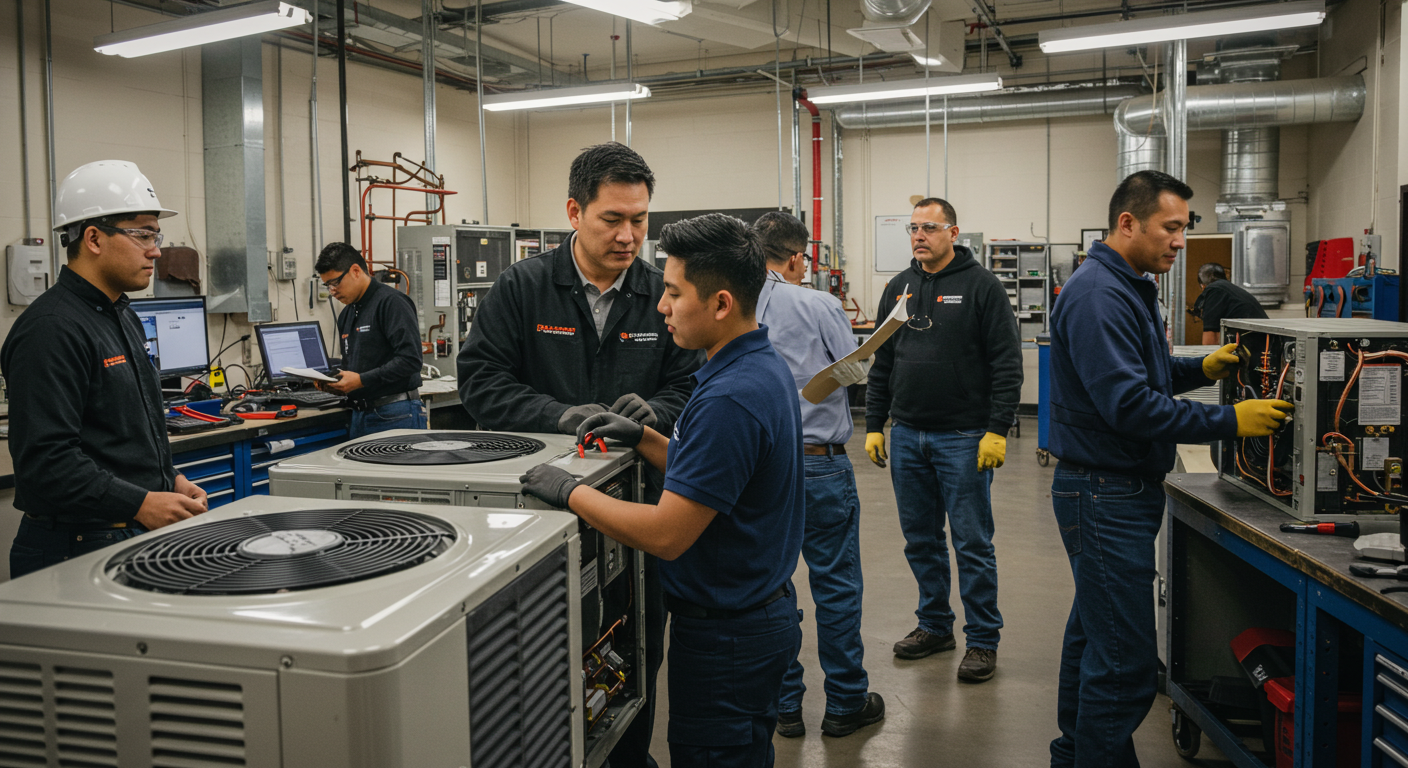Ensuring Safety in HVAC Confined Spaces: A 2025 Guide
Hey there, HVAC pros! Working in confined spaces can be a tough gig, right? It’s not just about squeezing into tight spots but also ensuring you’re safe while doing your job. With over 1,030 fatal injuries in confined spaces reported between 2011 and 2019, it’s crucial that we talk about how to keep you and your team safe. Ready to dive in?
Understanding the Risks in HVAC Confined Spaces
When you’re working in confined spaces, you’re dealing with some serious risks. Hazardous atmospheres, like oxygen-deficient air and toxic gases, account for a whopping 56-82% of confined space deaths. And let’s not forget about the engulfment hazards that cause 11-20% of fatalities. It’s a dangerous world out there, especially for HVAC technicians who often work in these environments.
Essential HVAC Confined Space Procedures
So, how can you protect yourself? First, always conduct atmospheric testing before and during your entry. Tools like the Fieldpiece digital manifold are game-changers for monitoring gas and pressure levels. Remember, over 60% of confined space fatalities occur among rescuers, so make sure your team is trained in proper rescue procedures.
Permit-Required Confined Spaces (PRCS)
About 42% of incidents happen in PRCS, so always ensure you have the necessary permits before entering. And even with a supervisor present, incidents still occur, so never let your guard down.
- Always test the atmosphere before entry.
- Use appropriate PPE at all times.
- Ensure your team is trained in rescue procedures.
- Follow OSHA 29 CFR 1910.146 procedures.
- Regularly review and update your safety protocols.
Conclusion: Your Safety Comes First
In 2025, we have the knowledge and tools to prevent accidents in confined spaces. By adhering to strict safety protocols and using the right equipment, you can significantly reduce the risk of injury. Always prioritize your safety and the safety of your team.
Ready to enhance your safety practices? Contact your local distributor for the latest in HVAC safety equipment!
FAQs on HVAC Confined Space Safety
What are the main hazards in HVAC confined spaces?
Hazardous atmospheres, engulfment hazards, and the risk of fires or explosions are primary concerns.
How can I improve safety during confined space entry?
Conduct atmospheric testing, use PPE, and ensure your team is trained in rescue operations.
What tools are essential for monitoring confined space atmospheres?
The Fieldpiece digital manifold is an excellent tool for monitoring gas and pressure levels.
Why is rescue training important for HVAC technicians?
Over 60% of confined space fatalities occur among would-be rescuers, highlighting the need for proper training.
What regulations should I follow for confined space entry?
Always adhere to OSHA 29 CFR 1910.146 procedures for safe confined space entry and work.




